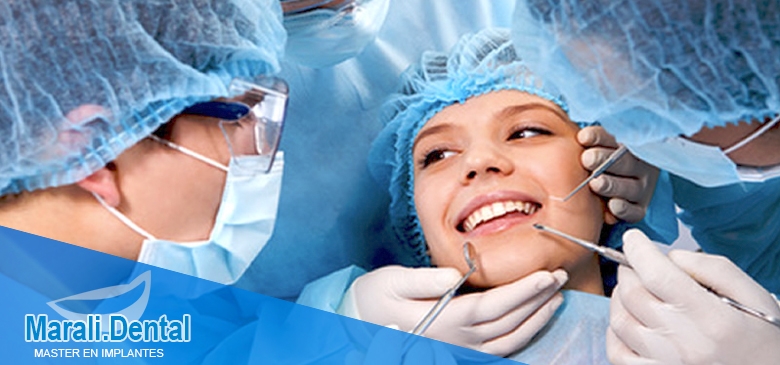Oral surgery treats many conditions inside the mouth and teeth from extraction of wisdom teeth braces to frenulum resection (labial or lingual), very common in children.
The maxillofacial surgeon specialist is the worldwide recognized as one who presents the theoretical knowledge and optimal surgical skill to perform this type of intervention. And we could define the oral cavity as his common working area which he perfectly masters.
The buccal (or oral) surgery is the part of the specialty dedicated to the diagnosis surgical and adjuvant treatment of the diseases, injuries and defects of the jaws and adjacent areas.

Wisdom teeth or third molars surgeries
Wisdom tooth surgery consists mainly in the extraction of wisdom teeth. The surgical time depends on the case, but usually ranges between 15 and 30 minutes.
Before the intervention is important to bring the diagnostic test (Orthopantomogram or CT scan if required). Once the intervention is done, postoperative rules will be explained.
This type of intervention is quite common and is usually performed under local anaesthesia. Sometimes, especially depending on the situation or the complexity of the case, you may be performed under local anaesthesia and outpatient sedation or general anaesthesia.

Complex Extractions
This type of surgery involves removal of teeth. The approximate surgical operation time is 30 minutes.
It is an intervention usually performed under local anaesthesia, but depending on patient's need, if required will be performed under local anaesthesia and outpatient sedation or general anaesthesia.
It is important to bring the diagnostic test (Orthopantomogram or CT scan if required) to perform the intervention. Once the intervention is done, postoperative rules will be explained.
Frenulum surgery
Intervention (labial or lingual frenulum) is a very simple surgery that involves making a small cut in the frenulum, to release it and put a few stitches.
The operating time is very short, just 15 minutes. Once the intervention is concluded the patient receives complete guidelines to be followed to make his/her recovery as quick and easy as possible.
Removal of cysts and benign tumors
This type of surgery involves removal of the cyst and the affected area. In order to proceed to extraction it is important to first bring the diagnostic test ( panoramic radiograph or CT if required).
After the operation will explain the main postoperative rules you must follow . Following the protocol , the cyst or tumor will be analyzed and in ten days the patient must go to the office for a routine check in which you will be informed of the outcome of the pathology .
It is a surgery that can be performed under local anesthesia and sedation on an outpatient basis or general anesthesia depending on the size of the cyst or tumor.
In Spain, the edentulism, which it is as known to the absence of teeth, either total or...
If you are pregnant, do not forget to tell us so we can advise you and take care of your oral...


